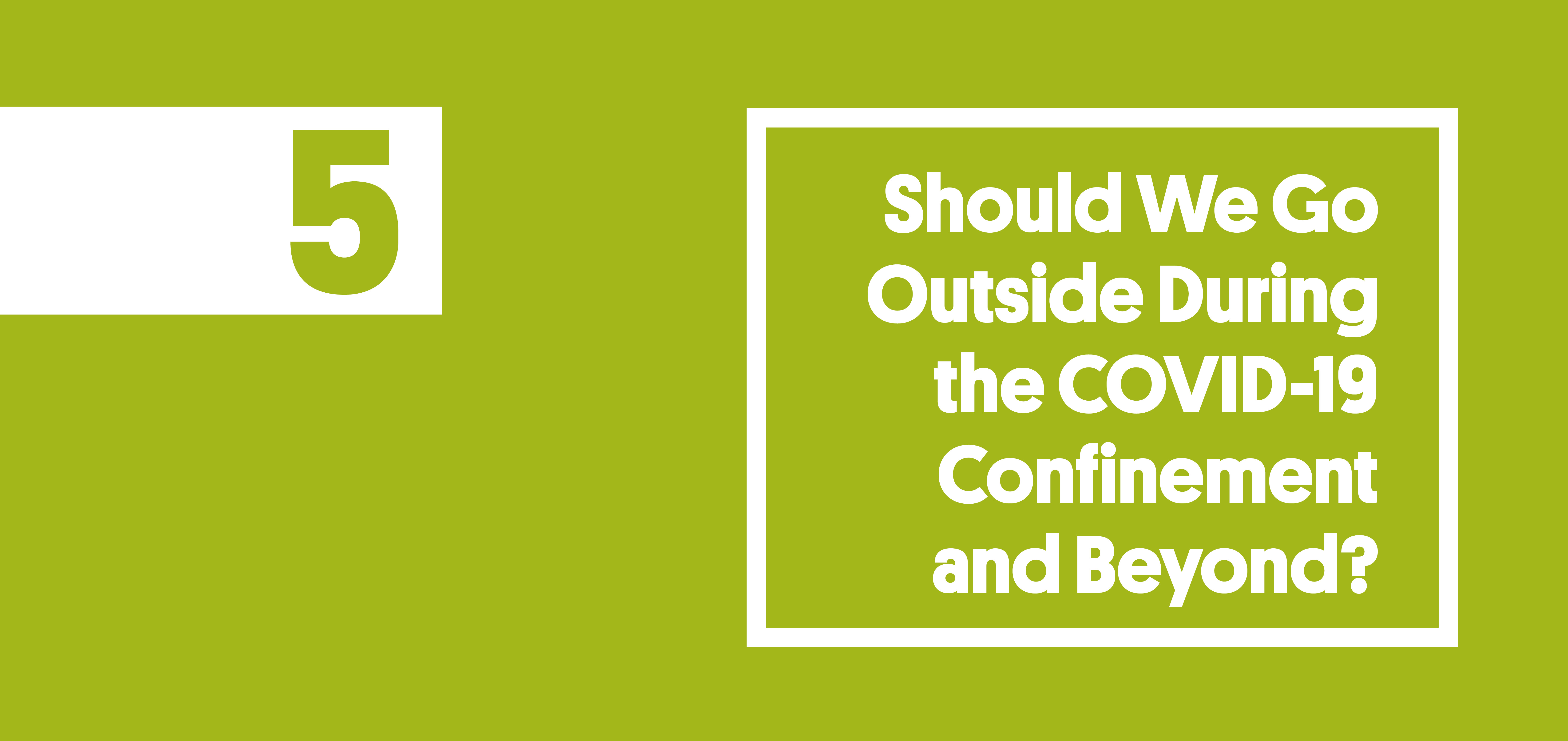Should We Go Outside During the COVID-19 Confinement and Beyond?
Series | COVID-19 & Response Strategy #5
24.04.2020This document is part of a series of discussion notes addressing fundamental questions about the COVID-19 crisis and response strategies. These documents are based on the best scientific information available and may be updated as new information comes to light.
This brief, together with briefs on physical activity and mobility, aim to support policies and resources for the community to manage deconfinement and be outdoors.
The Spaniards were locked down for more than six weeks, with permanent uncertainty about the unconflation strategies and their time horizons. We describe some of the fundamental implications that confinement and prolonged uncertainty can have on health.
Sedentary behavior and obesity
One of the consequences of confinement is a sedentary excess of time, which carries significant health risks. Considered today as toxic as tobacco, excessive sedentary lifestyle (for nine to ten hours per day) is associated with overweight and obesity, cardiovascular disease and mortality. Moderate to vigorous physical activity outweighs the risks of prolonged sedentary lifestyle.
Mood, depression and mental and social well-being
The length of the lock down, along with the economic uncertainty, is generating social isolation, loneliness, fear and mental health problems in people of all ages and in very varied circumstances. The most vulnerable people include:
- Health personnel, emergency services, police, fire, pharmacists, mental health professionals and support personnel who work on the front lines of the pandemic.
- People confined to their homes who suffer intimate violence, both physical and psychological. Most affected people are women and children.
- Elderly people who face routine changes and prolonged isolation from friends and family, lack of access to services and social contacts with business workers and other people in the community, and who are less likely to be able use the internet to facilitate interpersonal contact.
- People with pre-existing mental health disorders, whose disorders are aggravated as a result of isolation, lack of access to social services and treatment, including therapy and prescription of medications.
- People with pre-existing diseases and who do not have access to health services, including obtaining spare medications at the pharmacy.
Vitamin D deficiency
Vitamin D, commonly known as "the sunlight vitamin," is important for bone metabolism, bone health, muscle function, reduced risk of viral infections, cardiovascular health, and well-being. Direct exposure to sunlight is essential to promote vitamin D production. Vitamin D production during the summer months may be responsible for reducing respiratory tract infections by up to 50%. Although exposure to sunlight can have detrimental effects (for example, skin aging and skin cancer), it provides significant health benefits.
Strategies for promoting health in the COVID-19 temps
Staying healthy and managing confinement starts at home, maintaining daily routines: get up and go to bed, healthy meals and physical activity.
Spending time outdoors and having access to sunlight can be a way to address health problems, by increasing blood circulation, improving sleep patterns, reducing stress, increasing immune function, reducing inflammation, strengthening bones and allow better social integration in a time of isolation. It is important to note that being outdoors should not increase the risk of transmission of COVID-19, provided that sufficient distance is maintained between people and crowds are avoided.
Recommendations
Our recommendations are:
- Spend time outdoors at least 30 minutes daily to ensure sensible exposure to sunlight and encourage vitamin D production.
- Exercise for up to 60 minutes a day, including walking, running, gardening, biking, and playing in nearby open spaces.
- Encourage outdoor markets and grocery stores.
- Open streets, bike lanes, parks, squares, river courses, beaches, routes and other public spaces to facilitate the movement of people.
- Promote the joint work of hospital managers and those in charge of planning the territory.
- Prepare appropriate tactical and signaling interventions in public spaces.
- Encourage the use of public space at times when it is less occupied, and use less frequently frequented spaces.
- Adopt the slogan "Share the space, move and go home".
- Encourage citizens to follow personal hygiene routines before, during and after spending time outdoors.




